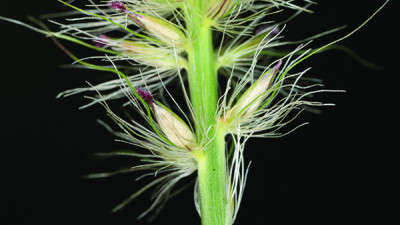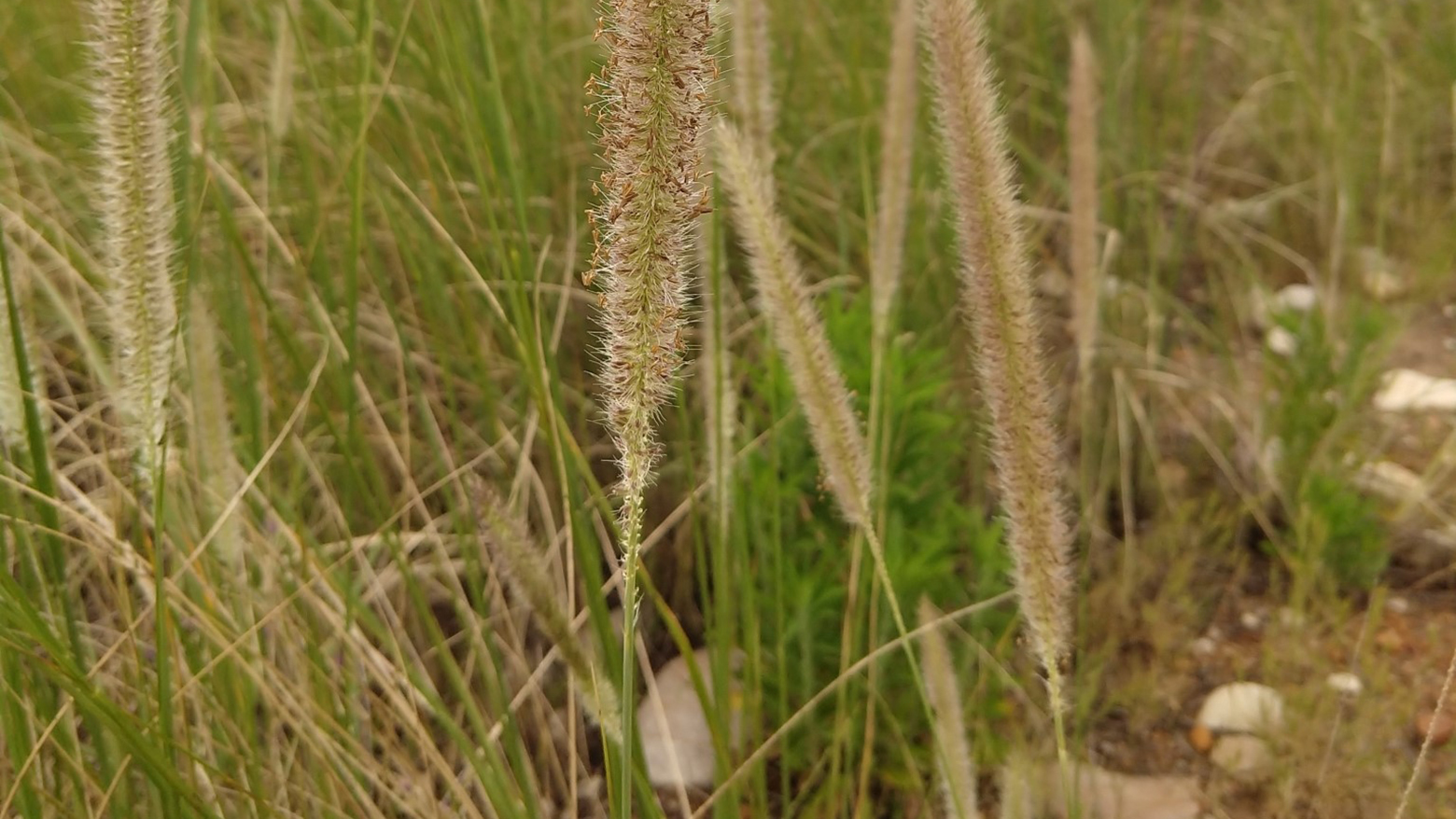| Management programme |
| Eradication |
| Objectives |
| Reduce the level of infestation of African feather grass within the Waikato region to zero density to prevent adverse effects and impact. |
| Impacts |
| Economic, biodiversity, soil resources, water quantity/quality, human health, social and cultural wellbeing, amenity/recreation |
Brought over from South Africa in the mid-nineteenth century, African feather grass was introduced to help bind soil in erosion-prone areas. Ironically, by binding soil in one area it can cause flooding or erosion in nearby habitats.

What does it look like?
Seeds
- Most easily identified by the distinctive seedheads (December to April) that are straw yellow, sometimes with a purplish tinge, and grow on a narrow spike 10-30cm long.
- Seeds prolifically from two years old.
- Large quantities of seeds are spread by the wind and the seed bristles easily hook onto clothing or animal fur.
Leaves
- Leaves are light green on the top and dark green on the underside, with prominent ribbing on the underside.
- The leaf-base has a fringe of dense needle-like hairs that can cause skin irritations.
Similar plants
As a tussock-forming grass up to 2m tall, it can be mistaken for pampas grass or toetoe.
Where is it found?
Risk areas include pasture, streambanks, lake edges, sand dunes, roadsides, wastelands, and swamps.
Why is it a pest?
- Spreads incredibly quickly through prolific seed production and has a vigorous creeping root system that forms dense clumps and crowds out native plants and valuable grazing land.
- It is a fire hazard.
- Can harbour rats and mice.
How does it spread?
- Rhizomes creep outwards and fragments are spread by soil movement and machinery.
- Seeds are spread via water and by wind for short distances, and also in clothing, animals, pelts.
How do you get rid of it?
African feather grass is exceedingly difficult to control. Please do not attempt to control it. Let us know if you think you have seen this plant or have it on your property by calling 0800 800 401 to report it to your local biosecurity pest plant officer.
More information
Publications
- The following publications are available for download or from Waikato Regional Council. Contact us to request a copy (freephone 0800 800 401).



